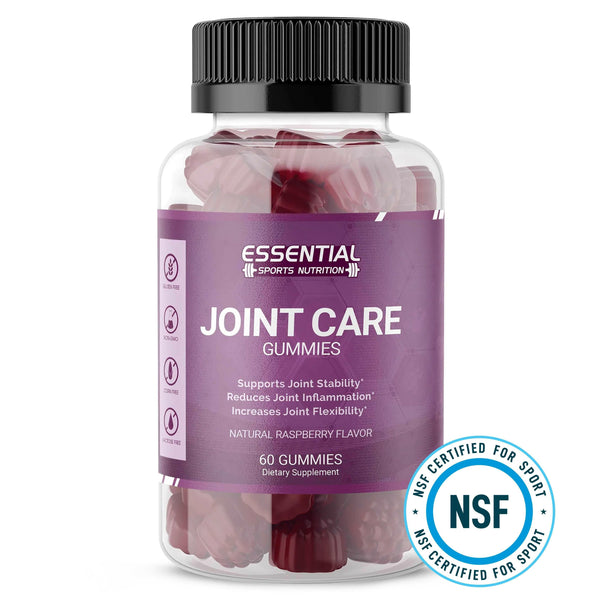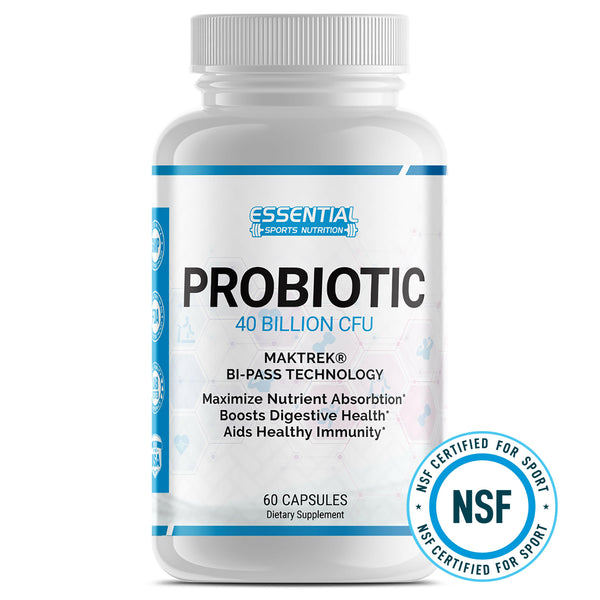Best Back Exercises for Mass Building in Your Workout
Have you ever wondered if the rumor that deadlifts are the ultimate back-builder is true? As a seasoned fitness enthusiast, you're likely aware that a well-sculpted back isn't just about aesthetics; it's the cornerstone of functional strength and a shield against injury. You've probably been told that exercises like bent-over rows, pull-ups, and deadlifts are non-negotiable in the quest for mass, but the devil is in the details – or in this case, the technique and programming. It's not just about what you do; it's how you do it that can set your gains apart from the rest. Stick with me, and I'll guide you through the intricacies of optimizing your back routine, ensuring you're not just going through the motions, but sparking growth in those powerful muscles that define an impressive back.

Key Takeaways
-
Engage the upper lats with exercises that target this area specifically, often with a wide grip.
-
Strengthen the erector spinal muscles to maintain posture and allow bending and twisting movements.
-
Incorporate dynamic stretching before a back workout to enhance flexibility and prepare the muscles for the workload.
-
Deadlifts are essential for maximizing back mass and overall strength, focusing on form and targeting the right muscles.
Understanding Back Anatomy

To effectively build mass in your back, it's essential to first grasp the complex anatomy of this powerhouse muscle group. The back is comprised of several key muscle groups, each playing a pivotal role in movement and stability. At the forefront are the latissimus dorsi, or "lats," which are the broadest muscles of the back and crucial for achieving that coveted V-taper. Engaging the upper lats requires exercises that target this area specifically, often with a wide grip.
Beneath the lats, you'll find the erector spinae, a set of muscles responsible for maintaining posture and allowing you to bend and twist. Strengthening these muscles is vital for a sturdy, well-supported spine. Meanwhile, the upper traps, located at the top of your back, are instrumental in shrugging and neck movements.
To develop these complex muscle groups efficiently, proper form is non-negotiable. It's not just about lifting heavy; it's about lifting right. Utilizing a neutral grip can help engage the correct muscles and distribute the load evenly. Always remember that understanding each muscle group's role within your back anatomy is the foundation for a successful mass-building strategy.
Essential Warm-Up Exercises
Before you hit the heavyweights, it's crucial to prime your back muscles with a proper warm-up. Incorporating dynamic stretching into your routine enhances flexibility and prepares your body for the demanding workload ahead. Stick to proven warm-up movements and injury prevention techniques to ensure a safe and effective back-building session.
Dynamic Stretching Benefits
Kickstarting your back workout with dynamic stretching primes your muscles for peak performance, ensuring they're supple, activated, and ready to handle the rigorous demands ahead. By incorporating movements like leg swings, arm circles, and torso twists, you're not just warming up; you're enhancing your muscle's range of motion, crucial for back exercises. This increased flexibility allows you to perform exercises such as pull-ups and other upper-body movements with greater efficiency.
Dynamic stretches also stimulate blood flow, prepping your muscles for the weight they're about to lift. Training unilaterally? Dynamic stretching benefits these movements too, by ensuring both sides of your body are equally prepared. Remember, building muscle isn't just about the workout; it's also about priming your body for what's to come.
Warm-Up Movement Examples
Initiating your back training regimen with essential warm-up exercises ensures your muscles are prepped and ready to tackle the intense workload ahead. It's crucial to start with warm-up sets that activate your entire back. Bend your knees slightly, keep your back straight, and set your feet shoulder-width apart.
Here's a concise table to guide your warm-ups:
| Exercise | Key Points | Repetitions |
|---|---|---|
| Deadlift Variants | Grab the bar with a pronated grip; use your back muscles | 8-10 each side |
| Bent-Over Rows | Keep your back straight; pull the bar towards you | 8-10 each side |
| Pull-Ups | Grip the bar variably; bring shoulder blades together | 5-8 per type |
| T-Bar Row | Stand over the bar; use a close grip for the exercise | 8-10 each side |
Remember to engage your core and breathe consistently during each exercise—meaning each side of your back gets equal attention.
Injury Prevention Techniques
After completing your warm-up movements, it's vital to focus on injury prevention techniques to ensure your back muscles are not only warmed up but also safely prepared for the intense workout ahead. Poor form, especially when handling heavy weight, can cause significant injury. To avoid this, always keep a slight arch in your lower back, making sure that your back is never rounded. When performing bent-over exercises, lean forward at the hips, keeping your back nearly parallel to the floor. Use strict form, and slowly lower weights while keeping your arms close to your body to maintain control. This will target the intended muscles effectively and reduce the risk of strain. Remember, controlled movements trump heavy lifting when it comes to building mass without injury.
Deadlifts for Overall Strength
To maximize back mass and overall strength, begin your heavy lifting sessions with deadlifts, a foundational exercise that recruits the entire posterior chain. Your back is a large, complex group of muscles, and deadlifts for overall strength are non-negotiable. They engage everything from your calves to your upper traps, offering a great deal of bang for your buck.
Focus on form to prevent injury and ensure you're targeting the right muscles. Sumo deadlifts, with a wider stance, can help if you're looking for a variation that's a bit easier on the lower back. Meanwhile, heavy bent-over rows are excellent exercises to build thickness in the upper back, but let's not forget that deadlifts are the bedrock for mass and power.
Incorporate deadlifts into your "program 30-Day Back with Abel" for a comprehensive approach to back development. Here's a quick guide to deadlift variations:
| Deadlift Variation | Target Muscles | Benefit |
|---|---|---|
| Conventional | Entire posterior chain | Overall strength and development |
| Sumo | Glutes, Hamstrings | Lower back ease, hip engagement |
| Romanian | Hamstrings, Lower back | Increased hamstring focus |
| Trap Bar | Quadriceps, Glutes | Reduced spinal load |
| Deficit | Entire posterior chain | Greater range of motion |
Row Variations for Thickness
To build a thick, muscular back, you need to incorporate a variety of row exercises into your routine. Bent-over barbell rows are the cornerstone for mass, demanding a powerful core engagement while working the entire back. For targeted growth, perfect your technique with single-arm dumbbell rows, ensuring you're not just going through the motions but actively contracting your muscles with each rep.
Bent-Over Barbell Rows
For a comprehensive back routine, incorporating the Bent-Over Barbell Row is essential, as it targets multiple muscle groups for overall thickness and strength. Mastering this move involves a blend of technique and strength:
-
Stance and Grip: Place your feet shoulder-width apart, hinge at the hips to achieve a bent-over position, and grab the barbell with either an overhand or underhand grip, aligning your hands just outside of your knees.
-
Execution: Maintain a flat back as you lift the weight, pulling back with your elbows and squeezing your back muscles at the top of the movement.
-
Consistency: Ensure tension throughout the entire exercise, focusing on controlled movements and driving the weight back with power from your upper and lower back.
Adhere to these guidelines to amplify mass and strength in your back workouts effectively.
T-Bar Row Benefits
Harnessing the power of T-Bar rows in your back regimen can significantly enhance muscle mass and density, especially when heavy weights are employed with proper form. T-Bar row benefits are extensive, making it one of the best exercises for back development. This total back-builder targets a wide range of muscles, from your lats to the middle back. By adjusting your grip, you can shift the focus and further tailor your workout to specific back regions.
Incorporating T-Bar rows upfront in your routine allows for increased muscle stimulation when you're at your strongest. Embrace the classic unilateral approach or explore popular movement variations like lying T-Bar rows or landmine rows with a wide T-handle. Remember, a lifting belt can be great as a pump-focused aid for bracing and stability, optimizing your muscle-building quest.
Single-Arm Dumbbell Technique
While T-Bar rows build foundational strength and mass, incorporating single-arm dumbbell rows into your routine will further sculpt your back, honing in on thickness and detail. Mastering the single-arm dumbbell technique is crucial for symmetry and focused muscle development.
Here's how to execute it with precision:
-
Starting Position: Stand with feet shoulder-width apart, a dumbbell in one hand. Bend forward slightly from the hips, keeping your back straight.
-
Raise the Weight: Pull the dumbbell upwards toward your hip, using your left or right arm. Squeeze your back muscles at the top of the movement.
-
Lower the Dumbbell: Return the weight slowly to the starting point, maintaining control. Rest between sides to ensure equal effort and growth.
Pull-Up Techniques for Width
To maximize your back's width, start with wide-grip and neutral-grip pull-ups, as they're key exercises for targeting the lats and expanding your wingspan. When you're clangin' and bangin' at the pull-up bar, remember that overhand pull-ups with a wider grip will carve out those Thick Wings, making your Back Wide show up from all angles. Your grip should be slightly wider than shoulder-width to hit the upper back.
Here's a quick table to guide your pull-up journey:
| Grip Type | Focus Area | Tips |
|---|---|---|
| Wide Overhand Grip | Lat Width | Grip outside shoulder width, full extension. |
| Neutral Grip | Lat Thickness | Palms facing each other, engage the lats. |
| Varying Intensity | Progressive Overload | Add weight or use assistance as needed. |
| Assisted Variants | Building Foundation | Use bands or machines to build up strength. |
Pull-ups are the quintessential back exercise for building Von, the kind of mass that doesn't just show up—it dominates. As you progress, consider adding weight to keep the challenge alive. But don't rush; build your foundation with assisted variations if you need to. Always aim for quality reps over sheer quantity; that's how you build a back worth showcasing.
Isolation Moves for Detail
After you've widened your back with pull-ups, it's time to chisel in the details using isolation moves like single-arm dumbbell rows and cable lat pulldowns. These exercises are your sculpting tools, allowing you to carve out the finer aspects of your back muscles with precision.
To ensure you're getting the most from your isolation moves for detail, follow this numeric list:
-
Single-Arm Dumbbell Rows: Focus on a full range of motion, pulling the dumbbell back close to your hips to fully engage the lats. Keep your reps controlled and sets go high. Introduce variations like rotation at the top or a pause to emphasize muscle fatigue.
-
Cable Lat Pulldowns: Use a fixed plane of motion for consistent tension on the lat muscles. This is not about having weight but rather about controlling the movement from extension to contraction for quality reps.
-
Dumbbell Pull-Overs: Lie perpendicular on a bench with just your upper back supported, holding a weight plate or dumbbell above you. Lower it slowly behind your head to stretch the lats, then bring it back up for that quick pump-focused burn.
Workout Programming Tips 
Crafting an effective back-building program requires strategic exercise sequencing to maximize muscle growth and strength gains. Start your workout with deadlifts when targeting heavy loads; this foundational move is a powerhouse among back exercises for mass. Experienced lifters know that initiating a session with these can prime your muscles for what's to come. As fatigue sets in, shift to higher reps to maintain intensity without compromising form.
As you progress, mix in various pull-up variations. If you're aiming for added resistance, weighted pull-ups challenge your muscles significantly. Conversely, machine-assisted or band-assisted pull-ups allow for more reps, refining your back's muscular endurance.
When it's time for T-bar rows, don't hesitate to strap on a lifting belt. The added bracing supports your core, enabling you to lift heavier while maintaining a straight line from your head to your hips. Remember to touch your chest with the bar to fully engage your lats.
In your workout programming, intersperse sets of seated rows with constant tension, opting for higher reps as you near the end of your session. And don't overlook single-arm dumbbell rows with lighter weights—these are your ticket to deeply fatiguing the muscles. If grip strength wanes, consider using lifting straps for back-focused moves like barbell shrugs. Lastly, always be willing to lower the weight to nail the perfect form.
Best Back Exercises for Building Mass FAQs:
Q: What are the best back exercises for mass building?
A: Some of the best back exercises for mass building include deadlifts, pull-ups, bent-over rows, and T-bar rows. These exercises target different parts of the back and can help you build size and strength.
Q: How do I create a back workout routine for mass building?
A: To create a back workout routine for mass building, include a combination of compound exercises like deadlifts and pull-ups, along with targeted exercises such as lat pulldowns and seated cable rows. Additionally, make sure to train the lower back and incorporate back-friendly stretches to prevent injury and promote overall back growth.
Q: What are the must-do back exercises for mass building?
A: The must-do back exercises for mass building include barbell deadlifts, pull-ups, bent-over rows, and seated cable rows. These exercises target the major muscles of the back and are essential for building mass and strength.
Q: How can I prevent back pain while doing back exercises for mass building?
A: To prevent back pain while doing back exercises for mass building, it's crucial to maintain proper form, use lighter weight until you've mastered the movements, and incorporate exercises that strengthen the lower back muscles. It's also important to listen to your body and avoid overtraining, as this can lead to strain and potential injury.
Q: What are some effective exercises to build the lower back muscles?
A: Some effective exercises to build the lower back muscles include hyperextensions, reverse hyperextensions, and good mornings. These exercises specifically target the lower back and can help strengthen and support the core muscles.
Q: Are there specific back exercises suitable for individuals with back pain?
A: Yes, individuals with back pain can benefit from exercises such as bird-dog, cat-cow stretch, and pelvic tilts, which help improve flexibility and strengthen the muscles that support the spine. It's important to consult with a healthcare professional before starting any exercise routine if you have existing back pain.
Q: How often should I train my back for optimal muscle growth?
A: It is recommended to train your back 1-2 times per week for optimal muscle growth. This allows for adequate rest and recovery between sessions while still providing enough stimulus for muscle growth.
Q: What role do compound exercises play in a back workout for mass building?
A: Compound exercises play a significant role in a back workout for mass building as they engage multiple muscle groups simultaneously, leading to greater overall muscle and strength development. Examples of compound back exercises include deadlifts, pull-ups, and bent-over rows.
Q: Can I build a massive back with bodyweight exercises alone?
A: While bodyweight exercises like pull-ups and chin-ups can certainly contribute to back muscle development, adding resistance through weights and machines can help maximize muscle growth. Incorporating a combination of bodyweight and weighted exercises can lead to a more comprehensive back development.
Q: What are some strategies to ensure complete back development in my workout?
A: To ensure complete back development, incorporate exercises that target the upper, middle, and lower back muscles. Focus on both vertical and horizontal pulling movements, and include a variety of grips and angles to ensure that all areas of the back are effectively trained.
Other Frequently Asked Questions:
How Can I Bulk Up My Back?
To bulk up your back, you'll need to hit it with compound lifts and targeted exercises. Start with deadlift variations to engage the entire back chain. Incorporate bent-over rows early in your routine for upper and lower back strength. Mix in pull-ups for overhead pulling power. Don't overlook T-bar rows for added weight and seated rows at the end for volume. Consistency and progressive overload are key for mass gains.
What Exercises Build a Bigger Back?
To build a big back, you've got to focus on compound movements. Deadlifts are key—they hit your entire posterior chain. Incorporate bent-over rows for a comprehensive upper and lower back workout. Don't skip pull-ups; they're crucial for overhead strength. T-Bar rows let you lift heavy, targeting your lats. Finish with seated rows for high reps to maintain tension. Stick to these, and you'll see that mass you're after.
How Many Back Exercises for Mass?
Imagine you're an architect; just as a building needs a solid foundation, your body requires a robust framework. For a strong back, you'll typically incorporate 4-5 exercises in your routine. Deadlifts lay the groundwork, bent-over rows construct the upper structure, pull-ups add definition, and T-bar rows pile on strength. Seated rows refine the details. Train with expertise, knowing each movement is a brick in the fortress of your mass.
How Can I Build My Back Fast?
To build your back quickly, focus on compound lifts that target multiple muscles. Start with heavy deadlifts to engage your entire posterior chain. Incorporate bent-over rows at the beginning of your workout, prioritizing lower rep ranges. Add pull-ups to hit different angles, and consider assisted variations if needed. Include T-Bar rows for additional weight, and finish with seated rows for higher reps to maintain tension. Consistency and intensity are key for fast development.
Conclusion: Train Your Back
In the gym's tapestry, your back's the canvas, broad and awaiting the stroke of iron brushes. Deadlifts lay the foundation, rows add depth, and pull-ups etch in the skyline. Sculpt with precision; each lift is a masterstroke towards that coveted V-sculpture. Remember, the art of muscle isn't rushed. Progressive overload is your palette, and form, the artist's steady hand. Now, go forth and craft your masterpiece with the wisdom of experience etched into your every move.




























